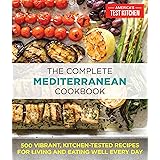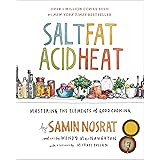The culinary landscape continually evolves, bringing forth innovative approaches to healthful eating that challenge conventional norms. For those navigating the specific tenets of an alkaline electric diet, finding satisfying and compliant breakfast or brunch options can often present a unique quest. However, as the video above brilliantly illustrates, crafting a truly exceptional and nourishing alkaline electric chickpea omelet is not only achievable but also surprisingly rewarding.
This detailed guide delves deeper into the philosophy behind the alkaline electric lifestyle and provides a comprehensive blueprint for perfecting your vegan chickpea omelet. We aim to equip you with the knowledge and techniques required to transform simple ingredients into a gourmet plant-based masterpiece, suitable for any discerning weekend brunch spread.
Understanding the Alkaline Electric Philosophy
The term “alkaline electric” often piques curiosity, representing a dietary approach centered on consuming foods believed to promote an alkaline state within the body while minimizing mucus-forming and acidic ingredients. This nutritional paradigm, popularized by Dr. Sebi, emphasizes raw, organic, and naturally alkaline fruits, vegetables, grains, nuts, and seeds. Adherents believe that such a diet enhances cellular energy, detoxification, and overall vitality.
When we talk about an alkaline electric diet, the focus is not merely on pH balance but on the electrical conductivity and vital force of the food itself. Proponents argue that foods rich in specific minerals and natural enzymes are more “electric” and contribute more effectively to the body’s energetic processes. This rigorous selection process ensures that every ingredient serves a purpose, contributing positively to systemic health.
Why Chickpeas are Ideal for an Alkaline Electric Omelet
Chickpeas, or garbanzo beans, are a staple in many plant-based diets and hold a revered position within the alkaline electric framework. Their flour, derived from finely ground dried chickpeas, acts as an extraordinary binder and texturizer, perfectly mimicking the structural integrity of eggs in an omelet. Moreover, chickpeas boast an impressive macronutrient profile, being rich in plant-based protein, dietary fiber, and complex carbohydrates, which provides sustained energy release.
From an alkaline perspective, chickpeas are considered to be an alkalizing food when properly prepared. They are also rich in essential minerals such as manganese, folate, iron, and phosphorus, all of which contribute to the body’s electrical balance and cellular function. Imagine if you could enjoy a rich, fluffy omelet that not only tastes incredible but actively supports your body’s pH and electrical needs; chickpeas make this a delicious reality.
Crafting Your Perfect Alkaline Electric Chickpea Omelet
Achieving the ideal texture and flavor for a perfect chickpea omelet requires attention to detail regarding ratios and cooking methodology. The fundamental ingredient is chickpea flour, which forms the base batter. Precision in liquid-to-flour ratios is paramount to prevent a rubbery or overly brittle texture. A commonly effective ratio involves approximately one cup of chickpea flour to one cup of water or vegetable broth, adjusted slightly for desired consistency.
Furthermore, incorporating leavening agents like baking powder, along with a touch of apple cider vinegar, can enhance fluffiness through a gentle chemical reaction. Nutritional yeast is another crucial component, lending a distinctive cheesy, umami flavor that elevates the omelet’s savory profile, making it a truly satisfying egg substitute. Seasoning with Himalayan pink salt, white pepper, and a pinch of black salt (kala namak) — which imparts an eggy sulfurous aroma — completes the authentic taste experience.
Key Ingredients for a Gourmet Vegan Omelet
- Chickpea Flour: The foundation for structure and protein.
- Filtered Water or Alkaline Vegetable Broth: For hydration and flavor depth.
- Nutritional Yeast: Provides a savory, umami, and cheesy dimension.
- Baking Powder and Apple Cider Vinegar: Essential for a light, airy texture.
- Kala Namak (Black Salt): Imparts an authentic sulfuric, eggy flavor.
- Himalayan Pink Salt and White Pepper: Fundamental seasoning.
- Onion and Garlic Powder: Enhances savory complexity.
- Alkaline Vegetables: Spinach, bell peppers, mushrooms, and onions are excellent choices for fillings.
- Grape Seed Oil or Avocado Oil: For cooking, chosen for their high smoke points and favorable fat profiles.
Beyond these core ingredients, consider fresh herbs such as dill, chives, or parsley to brighten the flavor. Imagine if your omelet could also be a canvas for vibrant, antioxidant-rich vegetables; choose deeply colored organic produce to maximize both nutritional impact and visual appeal.
The Art of Cooking a Flawless Vegan Omelet
The cooking process for an alkaline electric chickpea omelet mirrors that of its traditional counterpart, yet with subtle nuances. Begin by whisking all wet ingredients thoroughly, then gradually incorporate dry ingredients to prevent lumps, ensuring a smooth, consistent batter. This proactive approach guarantees an even cook and superior texture.
Heat a non-stick skillet over medium-low heat, applying a thin layer of grape seed or avocado oil. Pour the batter into the pan, allowing it to spread evenly. Cover the skillet to trap steam, which helps the omelet cook through and become delightfully fluffy. Once the edges are set and the top appears mostly dry, carefully fold the omelet in half, perhaps after adding your desired alkaline fillings. A golden-brown exterior with a tender interior signifies perfection.
Elevating Your Alkaline Brunch Experience
The alkaline electric chickpea omelet is undeniably the star of any brunch, but pairing it with complementary dishes can create an unforgettable dining experience. Consider serving your omelet alongside fresh avocado slices, which provide healthy fats and a creamy texture. A side of perfectly ripe, juicy berries—such as blueberries, raspberries, or blackberries—offers a burst of natural sweetness and antioxidants.
Furthermore, a light, crisp green salad dressed with a simple lemon-tahini vinaigrette would add a refreshing contrast. For those desiring more substance, imagine if you included a platter of roasted alkaline vegetables like asparagus spears or sweet potato wedges seasoned with herbs. Complementing beverages could include freshly squeezed green juice or a soothing herbal tea, each contributing to the holistic alkaline experience. These thoughtful additions transform a simple meal into a luxurious and health-conscious feast.











